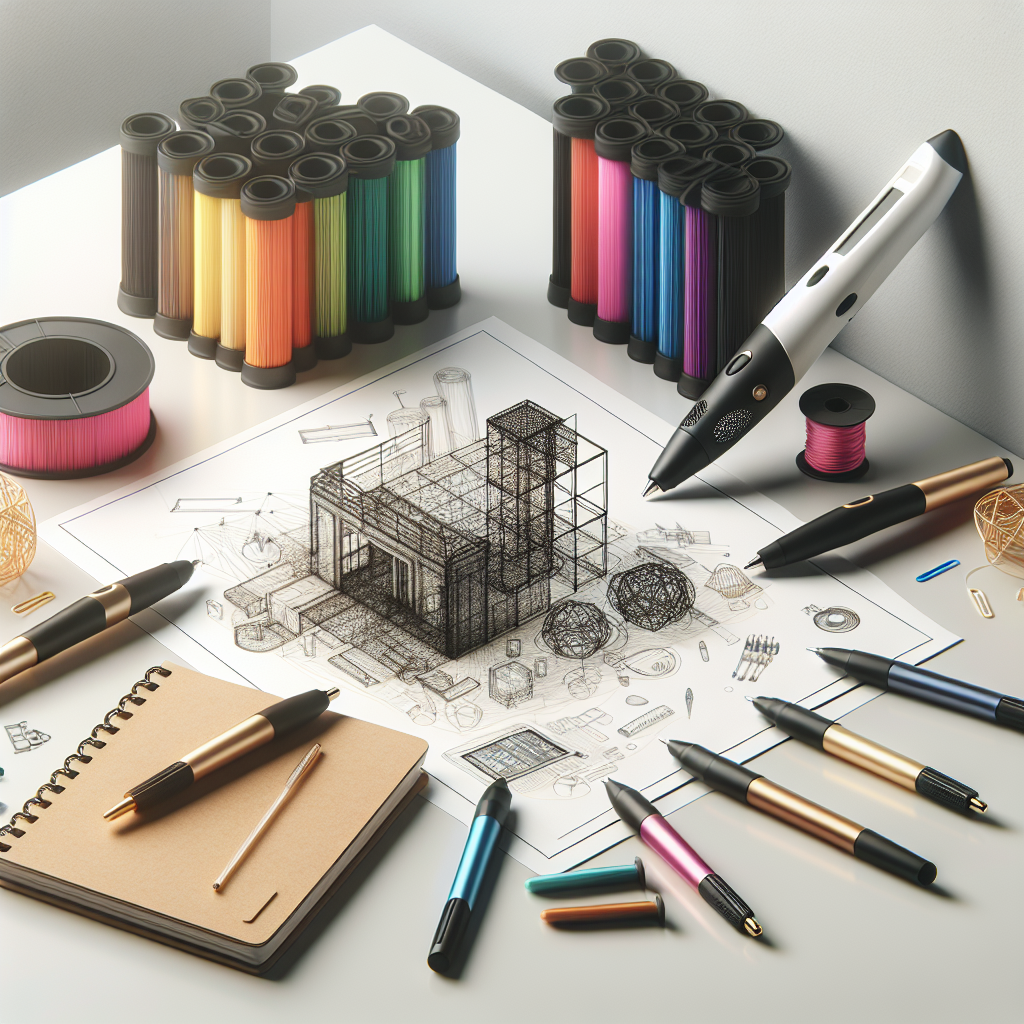Introduction to 3D Pen Projects
3D pens have revolutionized the way artists, designers, and hobbyists create three-dimensional objects. Whether you are new to 3D pens or an experienced user, starting a new project can be both exciting and daunting. This article will guide you through the best ways to initiate a new 3D pen project, ensuring you have a successful and satisfying creative experience.
Key Considerations When Starting a 3D Pen Project
Before delving into your project, it is crucial to consider the following factors:
- Project Complexity: Determine the difficulty level of the project to ensure it aligns with your skill set.
- Materials Needed: Know what materials are compatible with your 3D pen and readily available.
- Time Commitment: Assess the time required to complete the project from start to finish.
- Tools and Accessories: Have all necessary tools and accessories, such as templates, grids, and stencils.
Step-by-Step Guide to Starting a New 3D Pen Project
Step 1: Choose Your Project
Finding inspiration for your 3D pen project is the first step. You can find ideas from various sources such as online galleries, tutorials, and 3D pen communities. Consider starting with simple designs such as basic shapes or small models before progressing to more complex structures.
Step 2: Plan Your Design
Once you have chosen your project, planning your design is essential. Sketch your design on paper or use digital design tools to create detailed outlines. Include measurements and annotations to help guide your creation process.
Step 3: Gather Materials
Before starting your project, gather all the materials you will need. This may include different types of filaments, templates, and additional tools for shaping and finishing your design. Ensuring you have all materials beforehand prevents interruptions in your workflow.
Step 4: Set Up Your Workspace
A well-organized workspace is vital for a successful project. Ensure you have a clean, clutter-free area with adequate lighting. Utilize heat-resistant mats and other protective surfaces to prevent damage to your work area.
Step 5: Test Your 3D Pen
Testing your 3D pen before starting can save time and materials. Check the pen’s temperature settings and test the flow of the filament. Adjust settings as needed to achieve the desired output.
Step 6: Begin with Basic Structures
Starting with basic structures helps you get accustomed to the pen’s functionality. Practice creating simple shapes and patterns before moving on to more advanced parts of your design.
Step 7: Build in Layers
Constructing your project in layers enhances stability and accuracy. Begin with the base layer and allow it to cool before adding subsequent layers. This technique ensures that your structure holds together solidly.
Step 8: Refine Your Work
Once the main components of your design are complete, refine your work by smoothing rough edges and adding finer details. Utilize crafting tools such as scissors, files, and sandpaper for a polished finish.
Step 9: Assemble Components
If your design consists of multiple parts, carefully assemble them using a combination of 3D pen welding and external adhesives. Ensure all components fit together seamlessly and securely.
Step 10: Final Touches
Lastly, add any final touches to enhance your project’s aesthetic appeal. This can include painting, adding textures, or integrating additional decorative elements.
Tips for a Successful 3D Pen Project
- Start Small: Beginners should start with small projects to build confidence and develop skills.
- Keep Practicing: Regular practice helps improve precision and control over the pen.
- Join Communities: Engage with 3D pen communities for inspiration, advice, and support.
- Experiment with Filaments: Try different types of filaments to understand their properties and applications.
- Be Patient: Take your time and work methodically to achieve the best results.
Conclusion
Starting a new 3D pen project can be a rewarding and creative journey. By carefully planning your project, gathering the necessary materials, and following a systematic approach, you can bring your ideas to life with precision and artistry. Remember, practice and patience are key to mastering the art of 3D pen creations.

